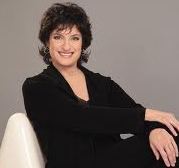|
Symphony
MYSTICAL PLANETS AND LIVELY GERSHWIN ORTIZ AT FINAL SRS CONCERT
by Peter Lert
Sunday, May 4, 2025
Symphony
VSO'S CONCERT MUSIC OF TIME, MUSIC OF PLACE
by Peter Lert
Sunday, April 27, 2025
Choral and Vocal
VOCAL ELEGANCE AND FIRE AT THE 222'S RECITAL APRIL 26
by Pamela Hicks Gailey
Saturday, April 26, 2025
CANTIAMO SONOMA SINGS AN INSPIRED GOOD FRIDAY MOZART REQUIEM CONCERT
by Pamela Hicks Gailey
Friday, April 18, 2025
DRAMATIC SHOSTAKOVICH SYMPHONY CLOSES PHILHARMONIC'S 25TH SEASON
by Terry McNeill
Sunday, April 13, 2025
LARGE COLLEGE OF MARIN AUDIENCE GREETS STOPHER ARTISTRY
by Terry McNeill
Saturday, April 5, 2025
Chamber
FRISSON DELIVERS SHIVERS OF DELIGHT
by Abby Wasserman
Sunday, March 30, 2025
OLD AND MOSTLY NEW IN SRS MARCH CONCERT IN WEILL
by Peter Lert
Saturday, March 22, 2025
Symphony
TWO FORMIDABLE SYMPHONIES AND PURPLE MOUNTAINS AT SRS CONCERT
by Peter Lert
Sunday, February 23, 2025
Chamber
THE PARKER CAPTURES DEMANDING ADES QUARTET AT RAC SEBASTOPOL CONCERT
by Peter Lert
Saturday, February 15, 2025
|
 |
 Pianist Nina Tichman |
CRYSTALLINE SCHUBERT
by Terry McNeill
Thursday, March 11, 2010
Nina Tichman is a pianist with an artistic vision that puts clarity and proportion above all else. In her Oakmont Concert Series recital March 10, one of many she has played in Berger Auditorium, these sterling qualities perfectly served the concertís opening music of Schubert, in this case the E Flat Sonata from 1817, D. 568.
Ms. Tichmanís subtle phrasing and nuanced cantabile, added to the bright treble of the piano, caught inimitably the wistful nature of the opening movement. Damper pedal was judiciously applied and there was a light touch throughout. The G Minor Andante Molto movement was played with mystery, almost a question and answer, and was lovely. Often Schubertís piano sonatas can seem far too long, but itís a heavenly length for musicians, and in the final three movements there was not a forced note or an unclear phrase. The long lines were relaxed and the many modulations in the finale deftly rendered. It was a perfectly chaste reading of a rarely-played score and for me the recitalís highlight.
Chopinís often played Polonaise Fantasie, Op. 61, followed, and Ms. Tichman continued in a lyrical and understated vein. There was no sonic emphasis on the bass notes at the opening, and the pianist was in no hurry to stress the tone poem parts of this marvelous composition. It was a restrained performance, the loose formal structure proving no obstacle for Ms. Tichmanís transparent playing, the forward-looking chromatic harmonies unfolding in sharp relief. The final A flat chord, marked Fortissimo, was played that way, breaking the quiet of the long tenuto and soft left-hand trills.
After intermission four of Debussyís 12 Etudes from 1915 were heard, pieces rarely seen on a concert program. Walter Gieseking thought the set as difficult as either of Chopinís Ops. 10 and 25, and Ms. Tichman began with Pour les tierces and Pour les Degrťs chromatiques. The latter was the more interesting, the artistís right hand busy in perpetual motion and the left hand quickly playing in the treble. The barcarolle-like Pour les Agrťments contained parts of Debussyís La Cathedral engloutie and here the pedaling was precise and embellishments telling. The final Pour les Octaves was brilliantly played, but at a moderate tempo.
Contemporary composer Stefan Heucke (b. 1959) has written many compositions with stark social themes, and has just completed a set of Preludes, Op. 61, that incorporates Schumannís imaginative comment about Chopinís Preludes: ďsketches, ruins and eagle wings.Ē Ms. Tichman played four from score, the In Moto Scorrendo and Molto moderato Preludes reflecting Chopinís muse, at least on an initial hearing. The former had a whirl of notes, many sections in contrary motion, and great washes of sound with the damper pedal. The Molto moderato had a polonaise flavor, but one with a dissonant nobility. The pianist played the final Prelude (Sehr langsam und schwer) as a dirge march, deep bass notes sounding as tone clusters and contrasting with chords high in the treble. The effect was intense but never offensive. These are robust works.
Concluding the recital were three short Rachmaninoff works, beginning with the early Polichinelle from Op. 3. Itís not an ingratiating work, perhaps because of its meandering length, similar in rhythms to the compact and powerful Oriental Sketch of 1917. The pianist played it well but the G-Sharp Minor Prelude of Op. 32 quickly overshadowed the Polichinelle. Here Ms. Tichmanís ringing sonorities resembled sleigh bells on a snowy Russian night, musical clarity and lucid textures again her achieved goal.
The D Major Etude-Tableaux, Op. 39, No. 9, is a work of high drama, a formidable task for a pianist with lots of big chords. Ms. Tichman adopted a sober tempo, underscoring the workís architecture at the expense of weighty sonority, and the approach did not quite unlock Rachmaninoffís passion and powerful rhythmic surges.
No encore was offered.
|
